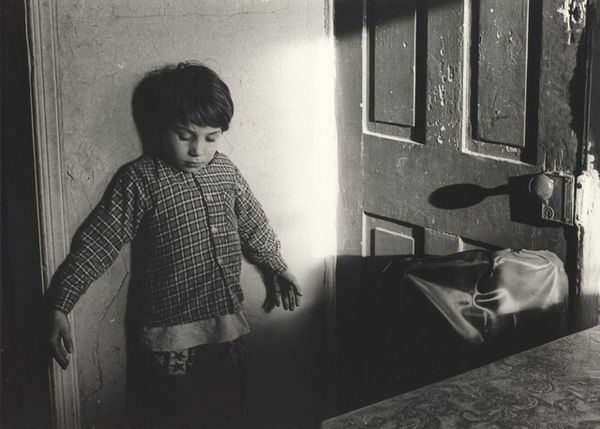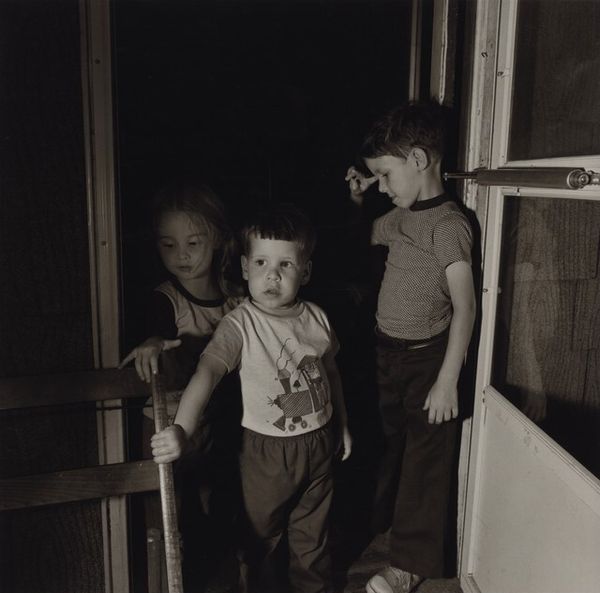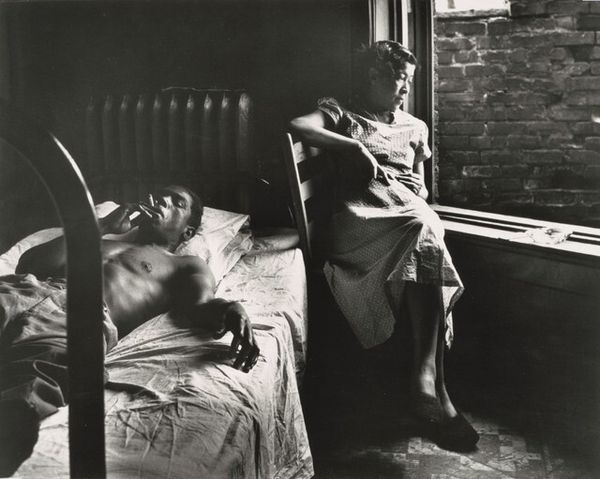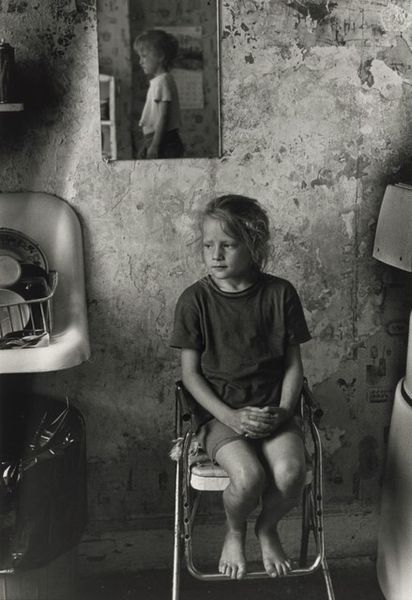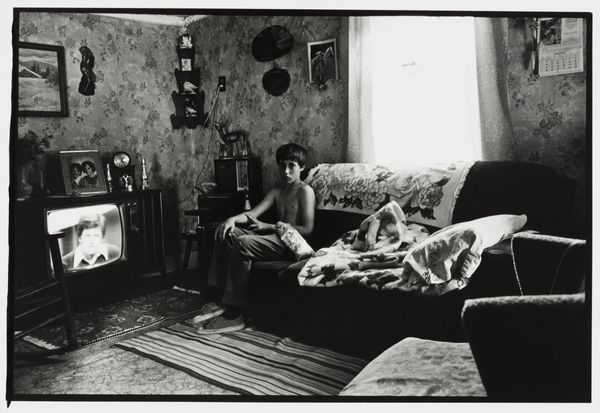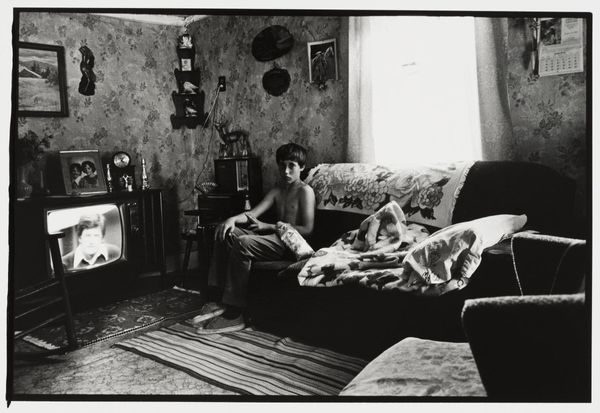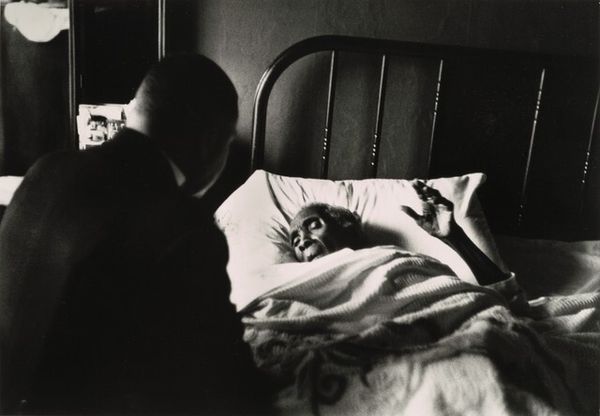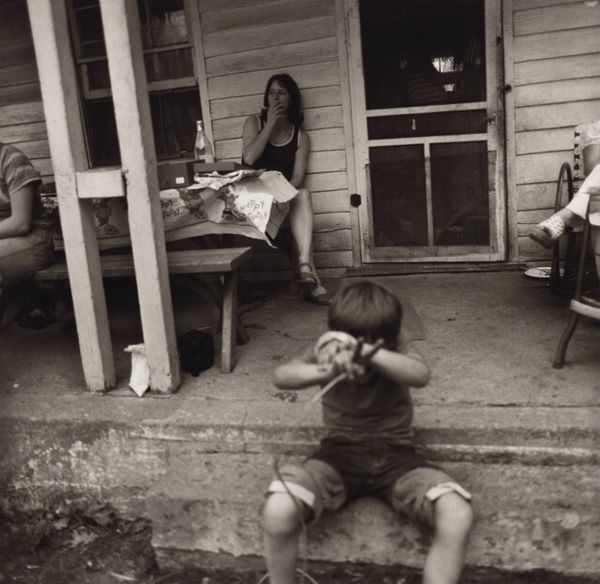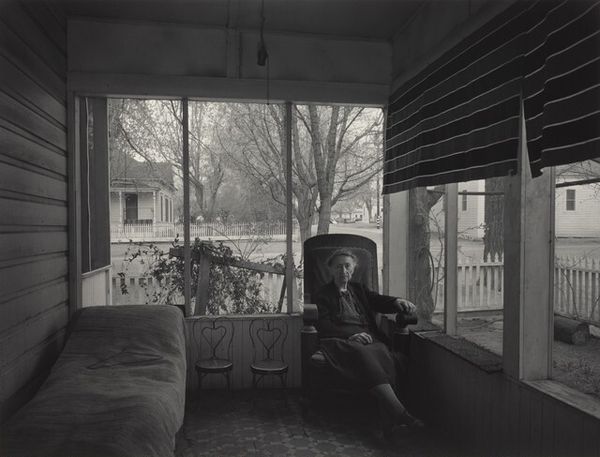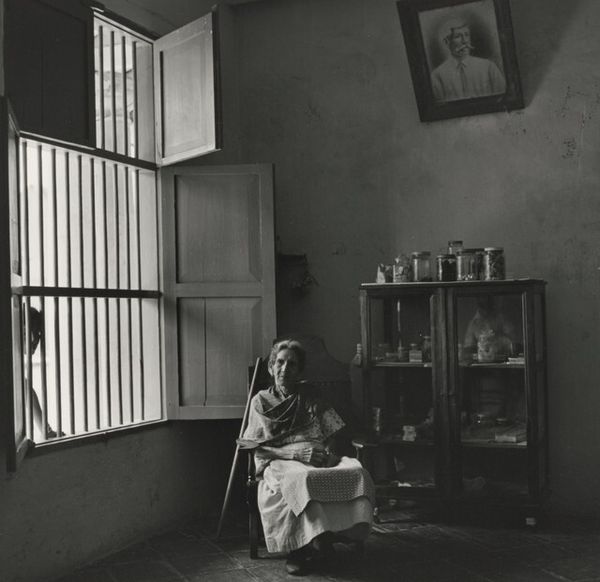
Victoria Chipps of the Horn Chipps Lineage of Medicine Men on her 90th Birthday with her Great Grand-daughter 2005
0:00
0:00
photography, gelatin-silver-print
#
portrait
#
black and white photography
#
photography
#
gelatin-silver-print
#
monochrome photography
#
indigenous-americas
Dimensions: image: 45.5 x 56.2 cm (17 15/16 x 22 1/8 in.) sheet: 50.8 × 60.96 cm (20 × 24 in.) matted: 60.96 × 71.12 cm (24 × 28 in.)
Copyright: National Gallery of Art: CC0 1.0
Editor: Here we have John Willis's 2005 gelatin-silver print, "Victoria Chipps of the Horn Chipps Lineage of Medicine Men on her 90th Birthday with her Great Grand-daughter." It’s a black and white portrait, and I’m immediately drawn to the contrast between the elder's stillness and the child's direct gaze. How do you interpret this work, especially given its historical context? Curator: This image speaks volumes about Indigenous identity and resilience. Willis's choice of black and white connects it to a long tradition of documentary photography, yet the intimacy suggests something deeper. It's not just a portrait; it’s a statement about lineage and the passing down of knowledge, particularly within a community that has faced historical oppression. What does the title, mentioning the "Horn Chipps Lineage of Medicine Men," tell you? Editor: It suggests that Victoria Chipps isn't just an individual, but a bearer of important cultural knowledge. It makes me wonder about the role of women within Indigenous healing traditions. Curator: Precisely. Often, mainstream historical narratives overlook the crucial contributions of women in Indigenous societies. This image subtly challenges that erasure. It places Victoria Chipps, a woman, at the center of this lineage. The presence of the great-granddaughter further emphasizes the continuity of these traditions and the fight to preserve them against systemic pressures. What kind of systemic pressures do you imagine this community is or was under? Editor: I guess things like forced assimilation, land dispossession, and cultural suppression. This image becomes an act of resistance by celebrating Indigenous identity on their own terms. I also see how photography becomes a political act. Curator: Exactly. It disrupts dominant narratives. It reclaims visibility and agency. Do you think the composition choices reinforce this? Editor: The older woman appears to be thinking of her history. And maybe the artist did too. I learned to look more for the message here than what it looks like to me, at first glance. Curator: Precisely, art can indeed serve as a very compelling and necessary call to action and reflection.
Comments
No comments
Be the first to comment and join the conversation on the ultimate creative platform.
